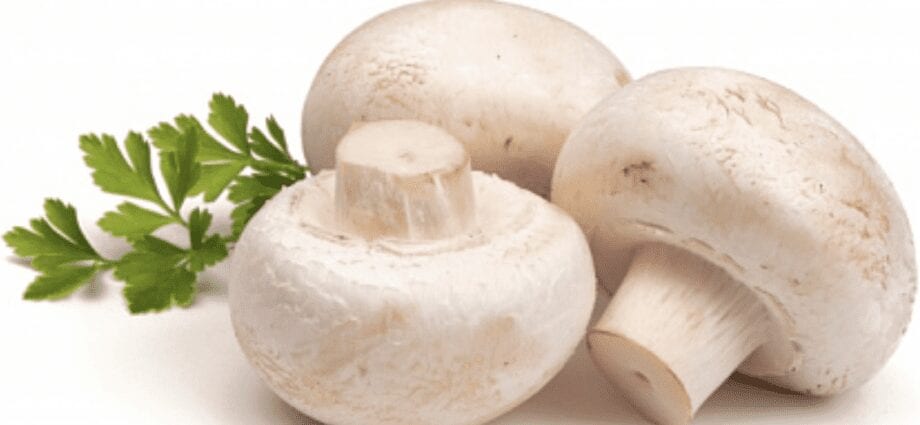Contents
- Description
- History of mushrooms Champignons
- The benefits of champignons
- The harm of champignons
- Name of the champignon mushroom
- Where does champignon grow
- What does champignon look like?
- When the champignon grows
- How to distinguish champignons from other mushrooms
- Composition and calorie content
- How to store
- How to cook champignons
- 9 Interesting Facts
- The use of champignons in medicine
- The use of champignons in cooking
- Champignon cream soup
Description
Champignon – this mushroom is not a gimmick, it turns out to be great to grow in large quantities in special greenhouses, there are even different varieties of Champignons that differ in taste, fertility and cap color: brown, cream and white.
But Champignon also has wild cousins that grow in the wild and have a much brighter taste and aroma: wild Champignon grows in open meadows, meadows, it can often be found in pastures where cows are grazed and the soil is abundantly fertilized with manure. Slightly less often, Champignon can be found in sparsely planted mixed forests, where the sun’s rays can reach the forest floor.
History of mushrooms Champignons
Champignons are very popular aromatic mushrooms. They are widespread all over the world because they are practically never wormy, and their taste is very unusual.
This mushroom is perfect for growing on farms, which is not possible with every species. One of the first mushrooms to be cultivated was champignon. Before that, they were harvested in the natural environment, but around the 17th century, mushrooms were specially planted in special rooms.

We noticed that they grow well in basements and other damp and dark places. Rich people kept a special room specifically for cultivating champignons, since they were expensive.
The benefits of champignons
The main part of the mushrooms is water. The rest is nutritious protein, acids, vitamins and minerals. There is especially a lot of phosphorus in these mushrooms – no less than in fish. Champignons are also rich in vitamins B, E, D.
These mushrooms are considered an excellent dietary food. Despite the low calorie content, they are quite nutritious due to the high concentration of proteins and vitamins.
Champignons have been studied by scientists for their ability to influence age-related changes. Namely, memory impairment and mental decline. It was found that the high content of lysine and arginine has a beneficial effect on the body, improving memory and mental efficiency.
The property of champignons has also been noticed to reduce inflammation. L-erogthionein in the composition of fungi slows down the synthesis of inflammatory markers and blocks the inflammatory process. This lowers the risk of many chronic diseases, and even reduces the likelihood of cancer cell growth. L-erogthionein together with linoleic acid removes toxins from the body and reduces cancerous tumors.
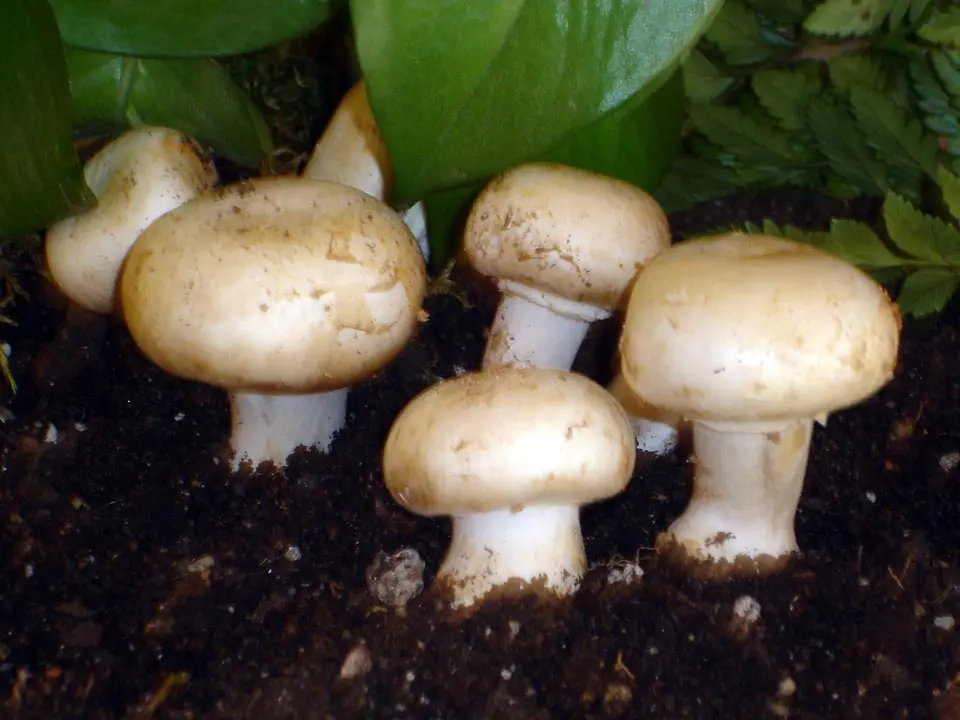
In an American study, mice with prostate cancer received mushroom extract. As a result, the size of the tumors decreased.
The harm of champignons
Since champignons also grow in our strip, many of them are harvested. However, this mushroom can be easily confused with some species of toadstools and fly agarics, and can be fatally poisoned. Champignons also accumulate harmful substances from the soil. For safety, it is better to buy mushrooms grown in greenhouses.
Champignons contain a large amount of chitin (indigestible fiber), in connection with which the digestive organs always manage to cope with their work. Overeating may cause discomfort and gas formation.
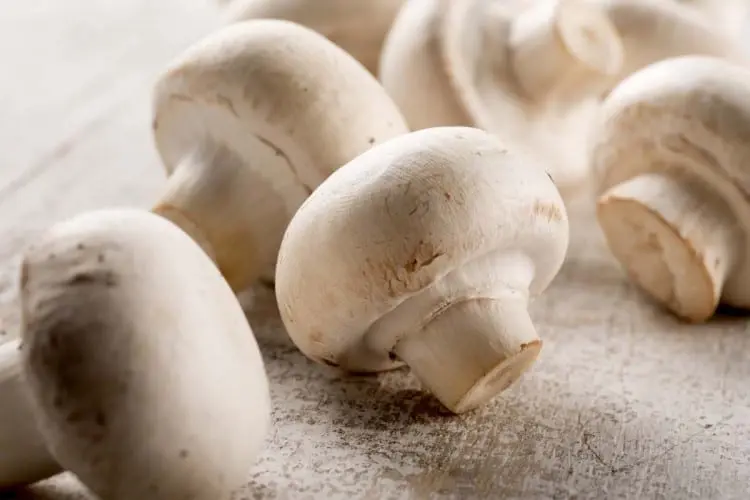
It is not recommended to include in your diet a large amount of mushrooms and people suffering from protein metabolism disorders, gout. This is especially true for mushroom broths, since most of the purines contained in mushrooms go into broth. There are some purines in the mushrooms themselves, but broths of them or just a large dose of mushrooms can provoke an exacerbation of gout
Name of the champignon mushroom
The Russian name for the mushroom Champignon comes from the French word champignon, which simply means “mushroom”.
The people also call champignon a bell, a cap.
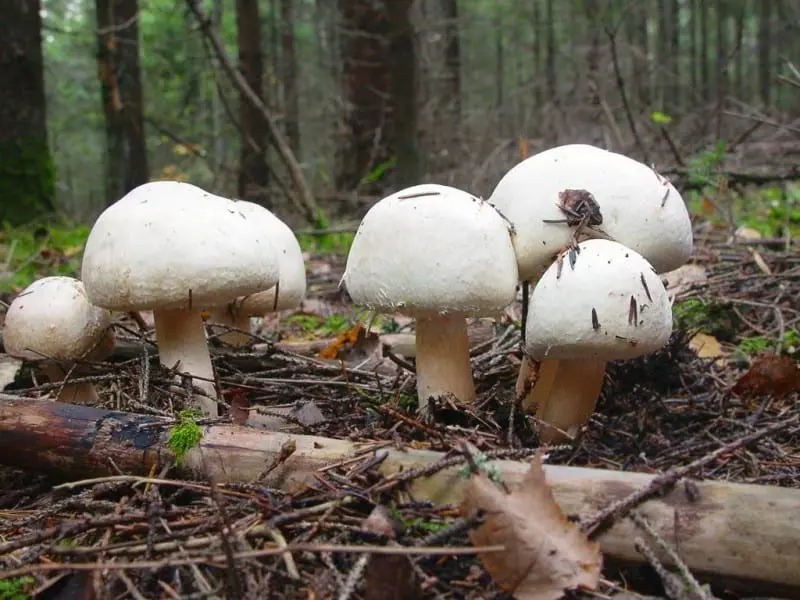
Where does champignon grow
Wild Champignon grows in open meadows, meadows, it can often be found in pastures where cows graze and the soil is abundantly fertilized with manure. Slightly less often, Champignon can be found in sparsely planted mixed forests, where the sun’s rays can reach the forest floor. At times, Champignon can be seen in the garden or even in the city.
What does champignon look like?
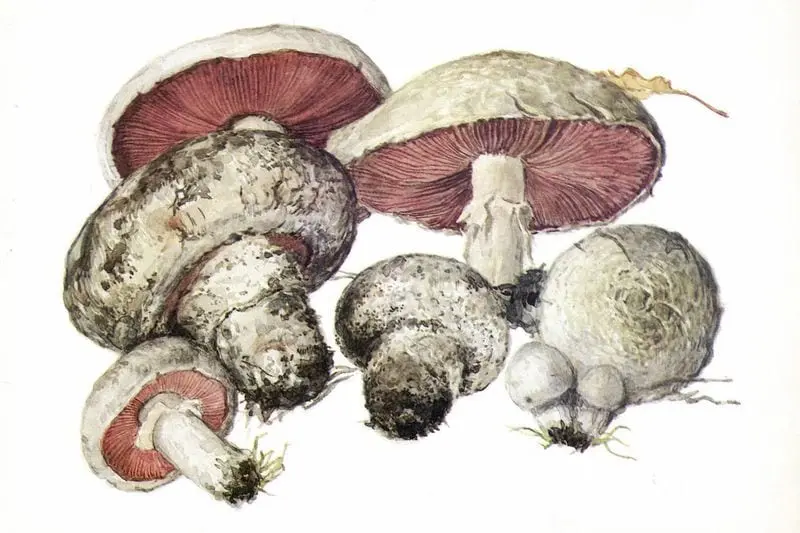
A characteristic feature of the Champignon is the pink bottom of the hat (plate), covered with a thin white skirt. As the mushroom grows and matures, the cap opens, and the pink color of the plates begins to darken. in old champignons, it becomes coal-black, and in very young mushrooms, pale pink – according to this sign, you can unmistakably choose mushrooms in the store.
When the champignon grows
Champignons can be found from late May to mid-October
How to distinguish champignons from other mushrooms
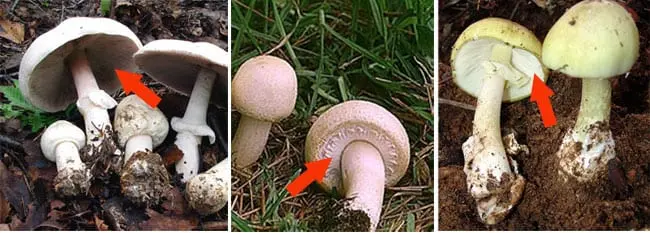
Young wild mushrooms must be distinguished from the Pale Toadstool (a very poisonous mushroom). How to distinguish Champignon from Pale toadstool?
- The color of the plates differs: in champignons – from pink in young to brown in old ones, in pale toadstool – always white.
- The base of the foot of the Pale Toadstool is framed by a film, like a fence.
Composition and calorie content
The calorie content of Champignons is 27 kcal per 100 grams.
Champignon contains valuable proteins, carbohydrates, organic acids, minerals and vitamins: PP (nicotinic acid), E, D, B vitamins, iron, phosphorus, potassium and zinc, useful for the body’s immune system. In terms of phosphorus content, mushrooms can compete with fish products.
How to store

Champignon is a universal mushroom – you can eat it in any form, it is excellent for drying for the winter and for rolling into jars and for preparing first and second courses.
How to cook champignons
Before cooking Champignons, they should be thoroughly cleaned. Mushrooms can be cleaned of soil and dirt with a knife, then quickly rinsed under running cold water, but do not soak – Champignons will absorb water, become tasteless and watery.
Champignons are fried for no more than 20 minutes (total time) until golden brown.
9 Interesting Facts
- Champignons were discovered more than 1,000 years ago. Italians were the first to find them, began to eat them, and soon realized that they could be grown at home. Champignons were one of the first mushrooms that did not produce crops in their natural environment.
- But in Europe they began to grow only in the 18th century. Moreover, in Paris, champignons were a delicacy and were sold at a very high price. They were grown by specially trained farmers, who began to call champignons “the Parisian mushroom”.
- Some of the kings of Europe had special basements – they grew and cultivated special mushrooms, which were worthy of the table of monarchs. Such champignons were the most delicious, and no one had the right to taste them.
- The name “champignon” came to us from France. The word champignon is translated from French as “mushroom”.
- Champignons are so popular that they are eaten even where mushrooms are not held in high esteem. They are exported from three countries: the USA takes the first place in the cultivation of mushrooms, the second – France. The third place is taken by Great Britain, where these mushrooms began to be eaten relatively recently. Champignons are very popular in Poland – there they are added to almost all dishes of the national cuisine.
- Champignons are used in cosmetology. There are beauty salons that offer their clients masks, lotions and other beauty products – champignon is in the first place in the composition of these products. Such funds are quite expensive.
- Champignons are also used in medicine. They are useful for bronchitis, diabetes mellitus, headaches, eczema and ulcers, hepatitis and tuberculosis. Also, an oil extract is made from champignons, which is prescribed by patients with problem skin.
- Very often mushrooms are used for weight loss. They are included in diets for their nutritional properties and low calorie content. 100 grams of boiled champignons contains 30 kcal, and canned mushrooms contain even less: an average of 20 kcal per 100 grams.
- A lot of delicious dishes are prepared from champignons. We have already written about how to choose mushrooms and how to preserve them. If you have champignons left and you do not know what to do with them, cook a cream soup according to our recipe, it will turn out very tasty!
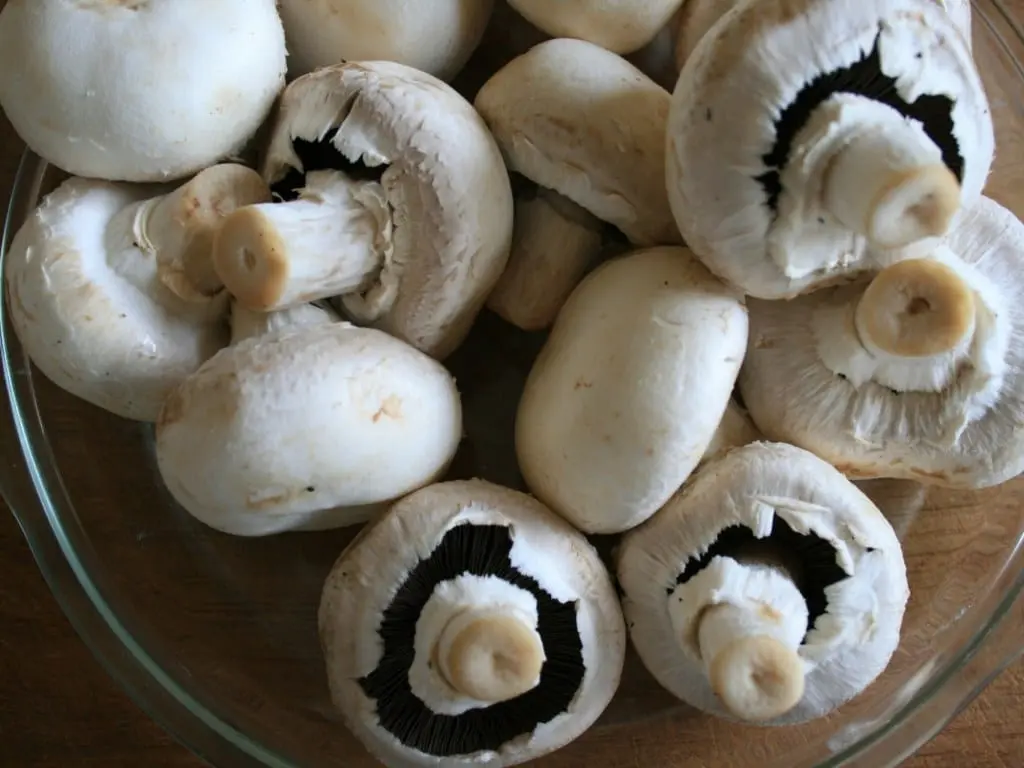
The use of champignons in medicine
Champignons are not used in medicine. But in folk medicine, this mushroom is quite popular – tinctures and extracts are made from it. They are used as an anti-inflammatory and healing agent.
In Tibetan, Chinese medicine, young mushrooms are used to treat infections. The fungus synthesizes a natural antibiotic that is effective against many bacteria. In cosmetology, mushroom gruel is used as a nourishing mask.
Doctors recommend champignons as a diet food for diabetics who are losing weight. These mushrooms are low in fat and have a low glycemic index. At the same time, the content of proteins and minerals is quite high, which is necessary for fasting or vegetarians as a substitute for meat food. Protein and dietary fiber are good for filling and help to satisfy hunger for a long time.
The use of champignons in cooking

Champignons are a very popular product, they are loved all over the world. They are suitable for frying, salting, pickling, main courses and even kebabs. Some people eat mushrooms raw, which is completely harmless, the main thing is to rinse them well in salted water.
Champignon cream soup
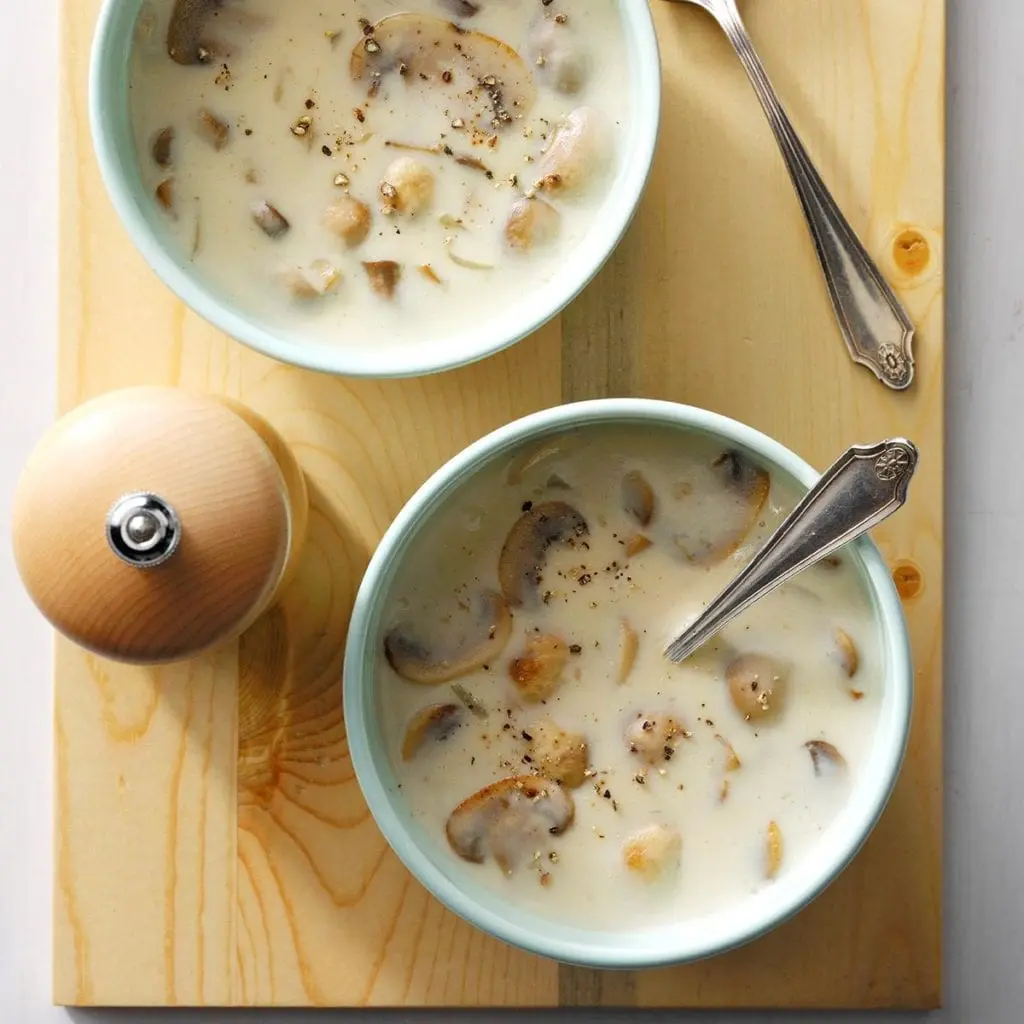
Traditional rich mushroom and cream soup. It turns out to be very high in calories. For a more dietary option, milk can be substituted for the cream. This soup is well served with white croutons.
- Champignons – 650 gr
- Bulb onion – 1 piece
- Lemon juice – half a tablespoon
- Olive oil – 3 tbsp spoons
- Cream – 80 ml
- Garlic – 3 cloves
- Salt, pepper, bay leaf – to taste
- Rinse the mushrooms well, cut into pieces and add water so that it only slightly covers the mushrooms.
- Send the peeled whole onion, garlic cloves and bay leaf to the pan. Cook until mushrooms are soft. Then remove and discard the onion and bay leaf, pour the broth into a separate container.
Grind boiled mushrooms with garlic with a blender in mashed potatoes, add salt and pepper. After cooling, pour in the cream and mix thoroughly. The soup will turn out to be thick, so you need to bring it to the desired consistency by adding the remaining broth. - Add a spoonful of olive oil and a sprig of parsley before serving.










